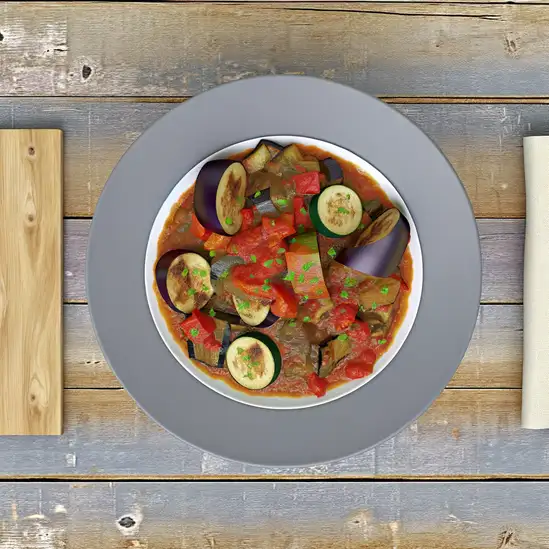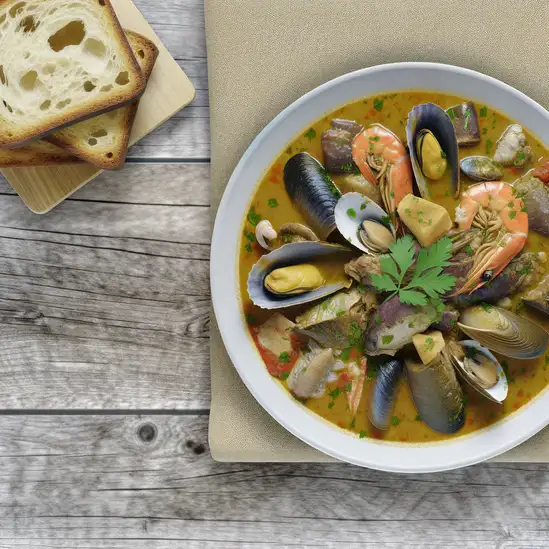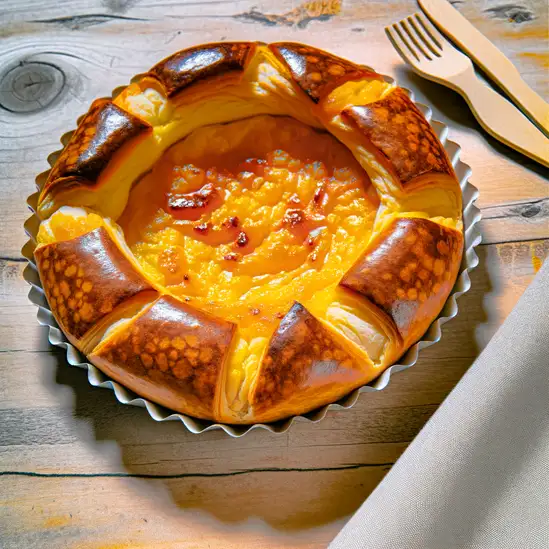



If you wander into Arles,you’ll immediately feel like you’ve stepped into a living painting—sun-drenched streets bathed in golden light,where history whispers from every corner. The city hums with a relaxed,timeless energy,a place where the past and present mingle effortlessly. As you stroll along the Roman amphitheater,you can almost hear the echoes of ancient crowds,while just around the corner,locals sip espresso at cozy cafés,chatting animatedly in the warm Provençal air. The scent of fresh bread and lavender drifts from the markets,mingling with the salty breeze from the nearby Rhône River. You’ll find yourself drawn to the vibrant colors of the flower stalls and the rich textures of handmade crafts. Arles has this wonderful way of inviting you to slow down,to savor the moment—whether that’s tasting a flaky,buttery croissant or lingering over a glass of rosé as the sun dips behind the bell towers. What really sets Arles apart is its artistic soul. This is the city that inspired Van Gogh’s most famous works,and you can trace his footsteps through the winding alleys and sunlit fields. The blend of Roman ruins,medieval architecture,and lively street art creates a unique backdrop that feels both ancient and alive. It’s a place where every corner tells a story,and you can’t help but feel part of its ongoing narrative.
The information on this page is currently being reviewed by Tripkliq and should be used as a guide only
Eng word: Hello
Eng pronunciation: bohn-zhoor
Local language: Bonjour
Eng word: Goodbye
Eng pronunciation: oh ruh-vwahr
Local language: Au revoir
Eng word: Thank you
Eng pronunciation: mehr-see
Local language: Merci
Eng word: How much
Eng pronunciation: kohm-byen
Local language: Combien
Eng word: Toilet
Eng pronunciation: twa-let
Local language: Toilettes
Eng word: Help me
Eng pronunciation: eh-deh mwah
Local language: Aidez-moi
Eng word: Yes
Eng pronunciation: wee
Local language: Oui
Eng word: No
Eng pronunciation: noh
Local language: Non
Eng word: Excuse me
Eng pronunciation: ehk-skew-zay mwah
Local language: Excusez-moi
Built in 90 AD, the Arles Amphitheatre is one of the most well-preserved Roman structures in France. It could hold up to 20,000 spectators and was used for gladiatorial contests and public events.
The Alyscamps is a large Roman necropolis located in Arles. It was one of the most famous necropolises of the ancient world and is mentioned in Dante's 'Inferno'.
The famous painter Vincent van Gogh lived in Arles from 1888 to 1889. During his time here, he created over 300 paintings and drawings, including some of his most famous works like 'Starry Night Over the Rhône' and 'The Yellow House'.
The Church of St. Trophime is a Romanesque church in Arles, known for its stunning portal and cloister. It was built in the 12th century and is a UNESCO World Heritage site.
In 1981, the Roman and Romanesque Monuments of Arles were designated as a UNESCO World Heritage site, recognizing the city's rich historical and architectural heritage.
The Cryptoporticus of Arles is an ancient Roman semi-subterranean gallery that dates back to the 1st century BC. It was used as a foundation for the Roman Forum and is an impressive example of Roman engineering.
The Roman Theatre of Arles was built in the 1st century BC and could accommodate around 10,000 spectators. It is still used today for various cultural events and performances.
The Baths of Constantine are a well-preserved Roman bath complex in Arles, dating back to the 4th century AD. They offer a glimpse into the luxurious lifestyle of the Roman elite.
The Place de la République is the central square in Arles, featuring an ancient obelisk from the Roman Circus. It is surrounded by historical buildings, including the Town Hall and the Church of St. Trophime.
In Arles, the most common Power Adaptor is Type C, Type E.



A traditional Provençal vegetable dish made with eggplant, zucchini, bell peppers, tomatoes, and flavored with herbs.

A flavorful fish stew originating from the Mediterranean, typically made with various types of fish, shellfish, and aromatic herbs.

A sweet brioche filled with a creamy mixture of butter and orange blossom, originally from Saint-Tropez but popular in the region.

A spread made from olives, capers, and anchovies, often served with bread or as a condiment for various dishes.

A hearty beef stew slow-cooked in red wine, often with vegetables and flavored with herbs, reflecting the rustic cuisine of the region.

A type of flatbread, often flavored with olives, herbs, or cheese, and typically enjoyed as an appetizer or snack.
Marseille 02 pulses with a vibrant energy that feels both timeless and refreshingly alive. As you wander through its streets,you’re greeted by the salty tang of the Mediterranean mingling with the rich aroma of freshly baked bread and sizzling seafood from nearby markets. The sunlight dances off the old stone buildings,casting warm glows on colorful shutters and bustling cafés where locals sip strong coffee and chat animatedly. It’s a place where history and modern life blend effortlessly,creating a rhythm that’s both laid-back and full of surprises.
You’ll hear the lively chatter in French mixed with the occasional splash of other languages,a testament to Marseille’s diverse,welcoming spirit. The sound of waves lapping against the harbor is a constant,soothing backdrop,inviting you to pause and soak in the view of fishing boats bobbing gently alongside sleek yachts. The streets are alive with the scent of herbs and spices from open-air markets,tempting you to taste the city’s famed bouillabaisse or a flaky,buttery pastry from a local boulangerie.
What makes Marseille 02 truly special is its character — a gritty charm softened by warmth and creativity. Street art colors the walls,and small galleries and music venues hum with local talent. It’s a place where you can lose yourself in winding alleys,discover unexpected corners of beauty,and feel the pulse of a city that’s proud of its roots but always looking forward. Trust me,once you’ve felt Marseille’s embrace,you’ll want to come back again and again.
Imagine stepping into a place where the sun seems to linger just a little longer,casting a golden glow over pastel-colored buildings and the sparkling Mediterranean Sea. That’s Nice for you—a city that effortlessly blends the relaxed charm of a seaside town with the vibrant pulse of French culture. Walking along the Promenade des Anglais,you’ll feel the gentle sea breeze on your skin and hear the rhythmic crash of waves mingling with the laughter of locals and tourists alike. The scent of freshly baked baguettes and rich espresso drifts from cozy cafés,inviting you to pause and savor the moment.
Nice has this wonderful rhythm,a mix of old-world elegance and laid-back joie de vivre. The narrow streets of the Old Town buzz with life—vendors calling out their colorful produce,the clinking of glasses in bustling bistros,and the occasional melody from a street musician. It’s a place where you can lose yourself exploring vibrant markets,then find a quiet spot to watch the sunset paint the sky in shades of pink and orange over the harbor.
What really makes Nice stand out is its effortless blend of cultures—French sophistication meets Mediterranean warmth. Whether you’re nibbling on a socca (a chickpea pancake) or sipping rosé at a terrace café,there’s a genuine friendliness that makes you feel like you belong. It’s a city that invites you to slow down,breathe deeply,and soak in the simple pleasures of life by the sea.
Barcelona feels like a vibrant mosaic where every corner pulses with life and color. The moment you step onto its sun-drenched streets,you’re wrapped in a warm Mediterranean embrace—salt in the air,the distant hum of waves mingling with lively chatter from bustling cafés. The city’s energy is contagious,a blend of old-world charm and modern creativity that invites you to slow down and savor each moment.
Wandering through the narrow alleys of the Gothic Quarter,you’ll hear the soft clinking of glasses and the melodic strum of a street guitarist,while the scent of fresh-baked bread and roasting coffee drifts from cozy bakeries. Barcelona’s architecture is like a living art gallery—Gaudí’s whimsical buildings,with their undulating lines and vibrant mosaics,feel almost dreamlike against the bright blue sky. It’s a place where history and imagination dance together.
Food here is a celebration in itself. Imagine biting into a perfectly crispy,golden croqueta or savoring the rich,smoky flavors of a traditional paella,all washed down with a glass of chilled cava. The city’s markets,like La Boqueria,burst with colors and aromas—ripe tomatoes,fresh seafood,and fragrant herbs—that make you want to taste everything.
What makes Barcelona truly special is its spirit:a city that lives passionately,where locals and visitors alike gather to share stories,laughter,and the simple joy of being in a place that feels both timeless and alive. Trust me,once you’ve experienced it,you’ll carry a piece of Barcelona’s magic with you long after you leave.
Imagine stepping into a place where the Mediterranean sun kisses your skin and the salty breeze carries whispers of old-world glamour—that’s Cannes for you. This city isn’t just about the famous film festival; it’s a vibrant mosaic of sun-drenched beaches,bustling markets,and elegant promenades that invite you to slow down and savor life. Walking along La Croisette,you’ll catch the rhythmic lapping of waves against the shore,the clinking of glasses from chic seaside cafés,and the soft murmur of conversations in a dozen languages. It’s a place where luxury feels effortless,yet warmly inviting.
The scent of fresh lavender and sea salt mingles with the aroma of freshly baked baguettes and rich espresso from corner boulangeries. Strolling through the old town,Le Suquet,you’ll find narrow cobblestone streets lined with colorful shutters and lively terraces where locals and visitors alike share laughter and stories over glasses of rosé. The city pulses with a creative energy,from the art galleries tucked away in quiet corners to the lively markets bursting with vibrant produce and fragrant herbs.
What makes Cannes truly special is its blend of sophistication and authenticity. It’s a city that celebrates beauty—in its architecture,its cuisine,and its people—without ever feeling pretentious. Whether you’re savoring a plate of fresh seafood by the harbor or watching the sunset paint the sky in shades of pink and gold,Cannes invites you to experience a slice of the French Riviera’s magic in a way that feels personal and unforgettable.
If you ever find yourself dreaming of a place where the Mediterranean sun kisses warm,golden stone streets and the scent of salty sea mingles with fresh herbs from nearby markets,Ajaccio is that kind of magic. Walking through its narrow alleys,you’ll hear the gentle hum of locals chatting over espresso,the clink of glasses from cozy cafés,and the distant call of seagulls above the harbor. It’s a city that feels alive but never rushed,where history and everyday life blend effortlessly.
Ajaccio’s charm is deeply tied to its roots—this is Napoleon Bonaparte’s birthplace,and you can feel the weight of history in the grand old buildings and the proud,welcoming spirit of its people. But it’s not just about the past; the city pulses with vibrant Corsican culture. You’ll catch the aroma of freshly baked pastries,the sharp tang of local cheeses,and the sweet,earthy notes of chestnut honey at the markets. Sitting by the waterfront,watching fishing boats bob gently on turquoise waters,you might even taste the freshest seafood you’ve ever had,paired with a glass of crisp Corsican wine.
What really stays with you is the atmosphere—warm,unpretentious,and full of life. Whether you’re wandering the sun-dappled squares,exploring the rugged coastline just beyond the city,or simply savoring a gelato while watching the sunset paint the sky in shades of pink and gold,Ajaccio invites you to slow down and soak it all in. It’s a place that feels like a heartfelt welcome,one you’ll want to return to again and again.
Imagine stepping into Palma,and instantly feeling the gentle Mediterranean breeze wrap around you,carrying the scent of salty sea air mixed with freshly baked ensaimadas from a nearby bakery. This city pulses with a laid-back yet vibrant energy—where ancient stone streets meet sleek modern cafes,and the golden light of the sun casts a warm glow over the terracotta rooftops. Palma isn’t just a place to see; it’s a place to soak in,with its lively plazas where locals chat over cortados and the distant hum of guitar strings drifting from a tucked-away bar.
Wandering through the old town,you’ll find yourself mesmerized by the soaring Gothic cathedral,its intricate details catching the sunlight in a way that feels almost magical. Around every corner,there’s a story—whether it’s the colorful market stalls bursting with fresh produce and spices or the quiet courtyards where bougainvillea spills over ancient walls. The city’s character is a beautiful blend of tradition and modernity,where centuries-old architecture sits comfortably alongside trendy boutiques and art galleries.
And the food—oh,the food! Tapas here are an experience,from tender sobrassada to briny olives and perfectly grilled seafood,all paired with a glass of local wine that tastes like sunshine in a bottle. Palma invites you to slow down,savor each moment,and feel like you’re part of a living,breathing canvas painted with warmth,history,and a touch of Mediterranean magic.
Scammers may install skimming devices on ATMs to steal card information. Tourists are often targeted as they withdraw cash in unfamiliar locations.
Scammers may pose as charity workers, asking tourists to sign petitions or donate money to fake causes. Once you sign, they may demand a donation.
Scammers may sell fake tickets for popular attractions like the Roman Amphitheatre or the Vincent van Gogh trail. These tickets are often invalid or overpriced.
Some taxi drivers may not use the meter or take unnecessarily long routes to overcharge tourists unfamiliar with the area.
Some shops near tourist hotspots may charge exorbitant prices for souvenirs, especially if they sense that the buyer is unfamiliar with local pricing.
In crowded areas such as markets, train stations, or near tourist attractions, pickpockets target distracted tourists to steal wallets, phones, or other valuables.
Some restaurants may add extra items or hidden charges to the bill, assuming tourists won't notice or question the charges.
Street performers may ask for a 'donation' after their act, but some may pressure tourists into paying more than expected.
The possession, use, and trafficking of illegal drugs are strictly prohibited in Arles and throughout France. Penalties for drug-related offenses can be severe, including fines and imprisonment. Even small amounts of cannabis, which is illegal in France, can result in legal consequences. Tourists should avoid any involvement with illegal drugs to stay within the law.
In Arles, as in the rest of France, smoking is prohibited in all enclosed public spaces, including bars, restaurants, and public transport. Smoking is also banned in certain outdoor areas such as school grounds, playgrounds, and sports facilities. Designated smoking areas may be available in some places. Violations can result in fines.
Vaping is subject to similar regulations as smoking in Arles. It is banned in enclosed public spaces and certain outdoor areas. Some establishments may have designated vaping areas. Tourists should look for signs indicating where vaping is allowed or ask local authorities to avoid fines.
What are other people saying about Arles?
Recent Social posts about Arles
There is nothing to show you for now.